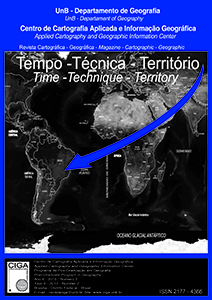INTERVIEW WITH PROFESSOR RAFAEL SANZIO ARAÚJO DOS ANJOS ”“ CIGA-UNB / PROJECT GEOAFRO TO NOVA ESCOLA REVIEW
DOI:
https://doi.org/10.26512/ciga.v6i2.21939Palavras-chave:
EntrevistaResumo
The LDB (Lei de Diretrizes e Bases) of 1996 does not mention the Quilombolas Communities. We know that in some aspects the problems with the access to schools are similar to the problems faced in the riverine communities, in the rural zone, and in the indigenous population, for example. Both specified on the law. Which would be the followed orientation when we talk about quilombos?- It is important not to lose sight that exists in space and in the Brazilian population a large territory and people not part of the “Official Brazil”. In this context, we can insert the quilombolas populations, which were excluded secularly of the country and of the priority actions in the decision-making sector. Prejudice and exclusion mark the history of Africa in Brazil and the quilombos, which are considered “the past of Colonial Brazil”, had recently started to have attention of the State and one of them is in the Transitory Devices of the Federal Constituion of 1988.



